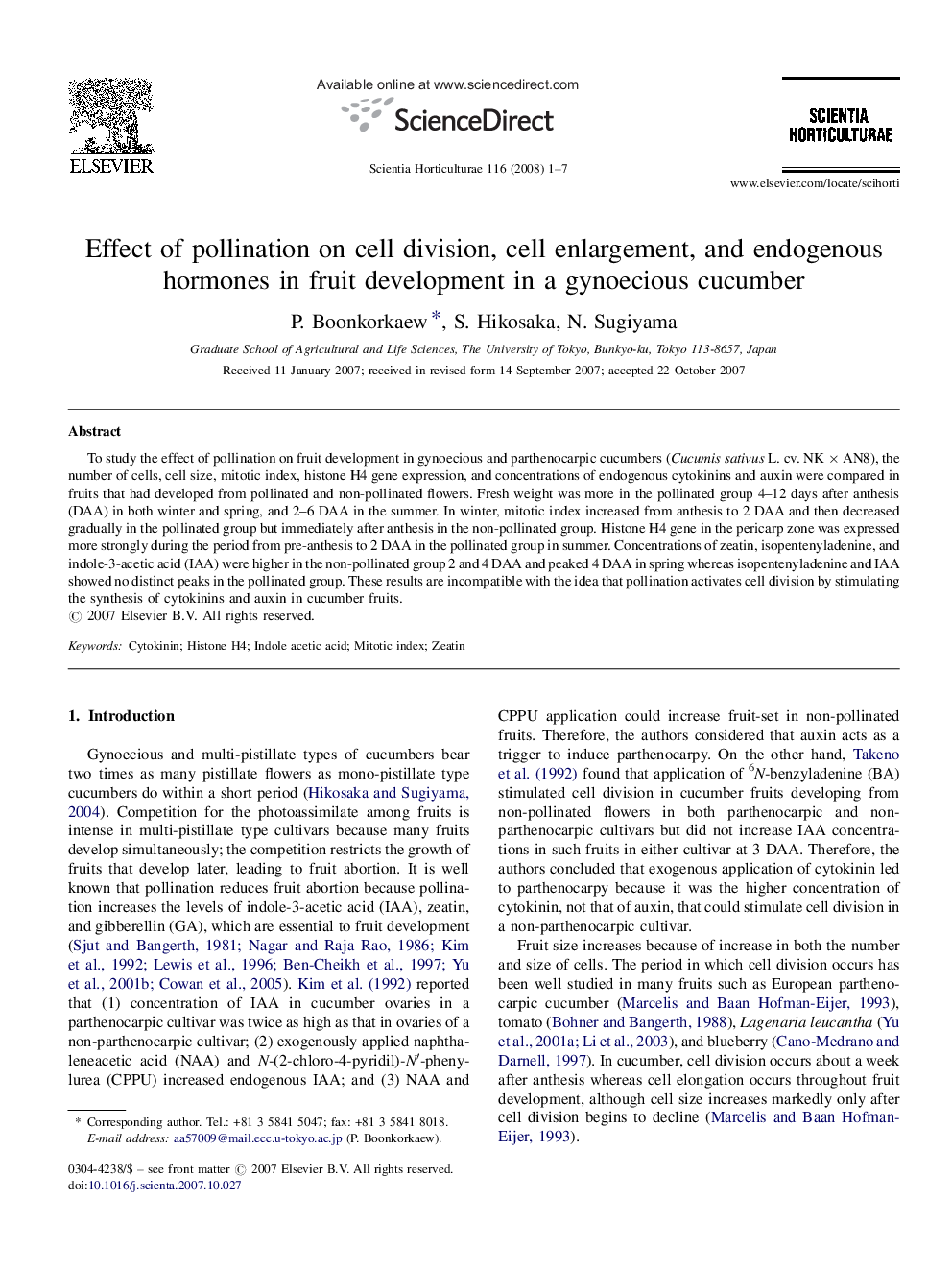| Article ID | Journal | Published Year | Pages | File Type |
|---|---|---|---|---|
| 4569532 | Scientia Horticulturae | 2008 | 7 Pages |
To study the effect of pollination on fruit development in gynoecious and parthenocarpic cucumbers (Cucumis sativus L. cv. NK × AN8), the number of cells, cell size, mitotic index, histone H4 gene expression, and concentrations of endogenous cytokinins and auxin were compared in fruits that had developed from pollinated and non-pollinated flowers. Fresh weight was more in the pollinated group 4–12 days after anthesis (DAA) in both winter and spring, and 2–6 DAA in the summer. In winter, mitotic index increased from anthesis to 2 DAA and then decreased gradually in the pollinated group but immediately after anthesis in the non-pollinated group. Histone H4 gene in the pericarp zone was expressed more strongly during the period from pre-anthesis to 2 DAA in the pollinated group in summer. Concentrations of zeatin, isopentenyladenine, and indole-3-acetic acid (IAA) were higher in the non-pollinated group 2 and 4 DAA and peaked 4 DAA in spring whereas isopentenyladenine and IAA showed no distinct peaks in the pollinated group. These results are incompatible with the idea that pollination activates cell division by stimulating the synthesis of cytokinins and auxin in cucumber fruits.
